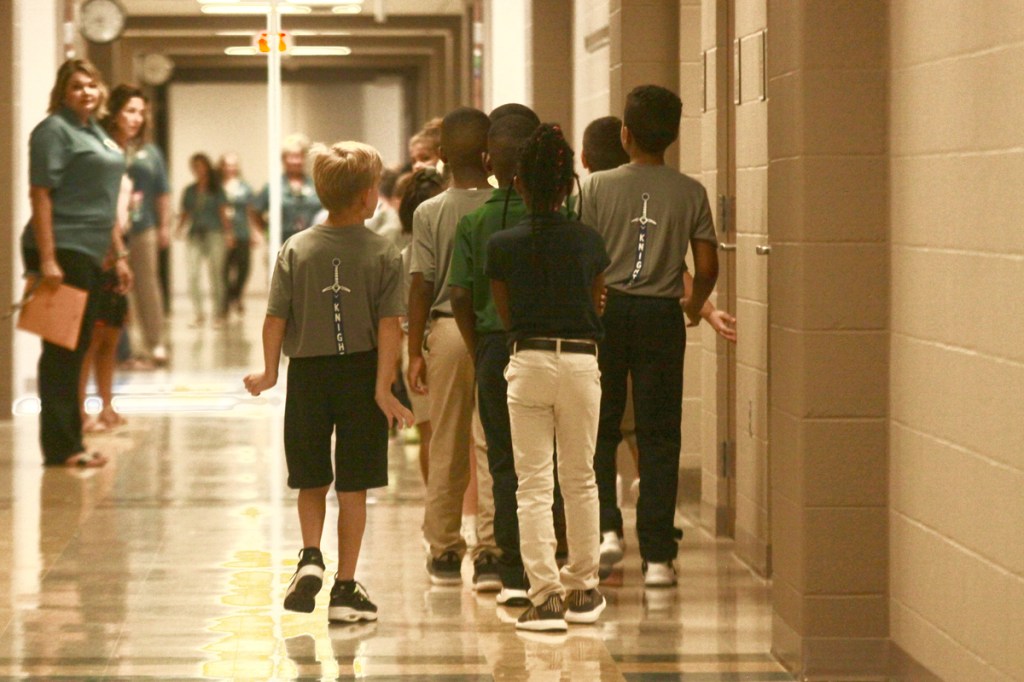Students learning in classrooms had higher test scores than those learning remotely
Published 8:00 am Sunday, September 5, 2021

- For the last two years, COVID-19 has left an impact on student’s learning over the course of the pandemic. As students around the country begin to go back to in-person learning, there is a hope that it will help with their overall development.
Over the last two years, COVID-19 has impacted the lives of people around the world. From physical to social to psychological effects, the pandemic has forever changed the way people go about their lives.
In the Teche Area, like the rest of Louisiana, the effects of COVID-19 are still lingering in the education world. Due to distant and social learning, some students have struggled to grasp their schoolwork virtually, as opposed to the students who were learning in-person over the last two years.
LEAP numbers indicated that virtual students performed considerably worse than those who learned in the classroom over the last year.
The Louisiana Department of Education said in grades 3 through 8, the rate of students who scored mastery or higher on the English and math portions of the test was 15 percent higher for students who spent the 2020-21 school year in the classroom compared to those who relied on online and virtual instruction.
Conversely, the Louisiana Department of Education said the students who used virtual and distance learning had an 11 percent greater rate of scoring unsatisfactory on the exams — the lowest achievement level.
About 75 percent of students have returned to the classroom by the end of the most recent academic year, State Superintendent of Education Cade Brumley said in a statement. The return of the students is vital for their success as the state of Louisiana, teachers and its students begin to return to a normal way of learning, he added.
The Cecil J. Picard Center for Child Development and Lifelong Learning at the University of Louisiana at Lafayette aims to help in the growth and development of students in the state. Through the growth of child study, they are aimed at helping in multiple areas of a child’s education, including: education, development, health and mental health, assessment and evaluation and early intervention and prevention programs, their website said.
Dr. Anjenette Holmes, Ed.S., works as a research scientist in the early childhood education studies department for the Picard Center at UL Lafayette, and she said for students who count on a hands-on teaching experience in the classroom, she believes those students were impacted greatly.
“Those who count on that hands-on interaction with other caregivers and adults, to perform words, look at expressions on peoples’ faces, (they were impacted with distant learning),” Holmes said.
According to one nationally representative survey from May 2020, ED2.Gov, it noted that the report said only 15 percent of districts expected their elementary students to be receiving instruction for more than four hours per day during remote learning, while 85 percent of districts expected instructional time to dip under four hours — more than an hour per day less than the pre-pandemic national average of five instructional hours per day.
Furthermore, according to the same report, in nearly a fifth of districts surveyed (17 percent), the instruction students did receive in spring 2020 was designed not to teach new skills and understanding, but to review what had already been taught—in a sort of pandemic holding pattern.
Children are resilient, Holmes said, and she believes they will be able to bounce back from the deficiency that was created because of the pandemic over the last year.
“It wasn’t the best practice,” Holmes said. “But it was something available. But I expect this year that scores will tick up because most of the children are back in the classroom.”
By January 2021 of this year, according to a nationally representative survey conducted by the National Center for Education Statistics, 31 percent of districts were reportedly offering more than five hours of live instruction for their fourth graders learning remotely, with 34 percent offering the same for eighth graders during remote learning. Those figures remained roughly constant through the spring of 2021.
With schools opening up and having students back for that human one-on-one interaction that Holmes belvies will help with the overall growth of their learning, she did note that for students who come from disadvantaged places in terms of learning environment, it could limit a child’s progress.
“So in a pandemic, what happened is, children who were already at a disadvantage, it made it a lot worse,” Holmes said.
Students, when they come back fully, will have big hurdles to overcome — while teacher’s will have to work harder to help students catch up on the work that was lost over the last two years.
“Those who had a deficit will continue to and that will make the teacher’s jobs a lot harder,” Holmes said.
LEAP Results
Grades 3-8
- From 2019 to 2021, the number of students scoring Mastery or above saw a decrease of 5 percentage points. This decrease was felt across all grade levels, content areas and student subgroups.
- Simultaneously, learning gaps deepened, as evidenced by a 5 percentage point increase in the number of students scoring Unsatisfactory. This disproportionately impacted:
- Economically disadvantaged students
- Students in the earlier tested grades (e.g., grades 3 and 4)
- Scores earned in mathematics
Grades 9-12
- Across all subjects, the number of students scoring Mastery and above declined by 5 percentage points since 2019.
- In each individual subject, the number of students scoring Mastery and above has decreased since 2019.
- Algebra I saw the greatest decline (-9 percentage points) from 2019 – 2021, and English II had the smallest decline (-2 percentage points).





